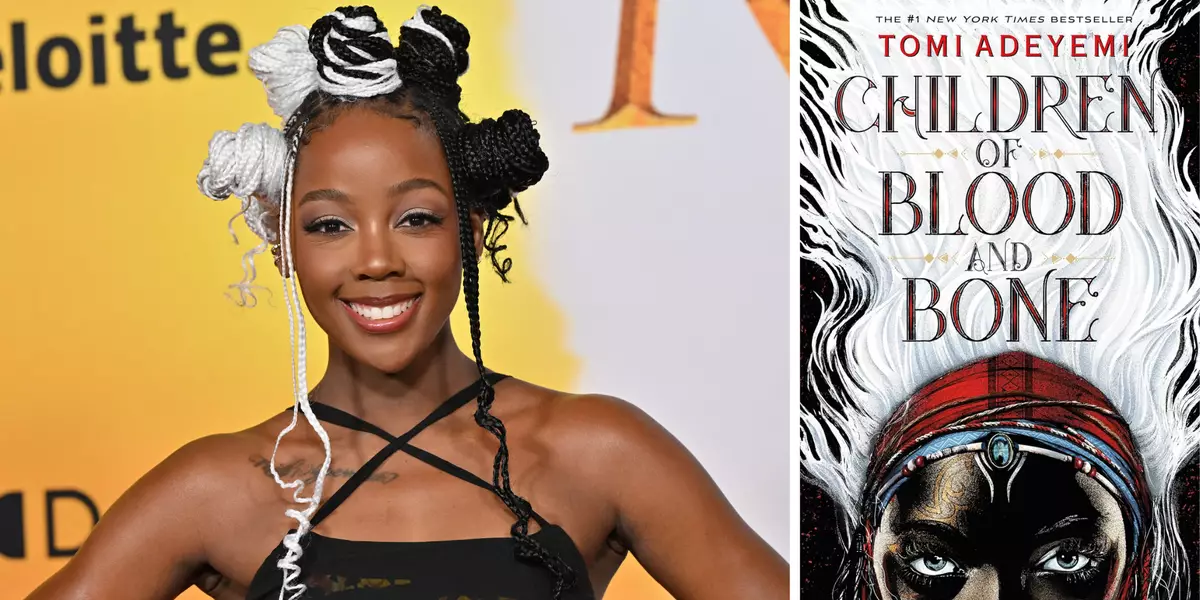The literary landscape of young adult fantasy has been invigorated by Tomi Adeyemi’s “Children of Blood and Bone,” a novel that has not only captured the hearts of readers but is now set to make a powerful impact as a film. Originally published within a modern literary context, the book draws on rich cultural influences from West African mythology and experiences, creating a layered narrative that touches on themes of identity, resilience, and the fight against systemic oppression. Paramount Pictures, recognizing the potential for cinematic magic, has officially dedicated resources to bring this beloved story to life.
“Hearing about this adaptation evokes a palpable sense of excitement,” says Adeyemi. Indeed, the announcement of a film adaptation has been a long time coming—initial rights were acquired by Fox 2000 back in 2017, mere moments before the book’s release. However, following the acquisition of 21st Century Fox by Disney, the rights transitioned before finding a new home at Paramount Pictures in 2022. Since then, this studio has made it clear that this adaptation will not be treated lightly; it’s a top priority, and rightfully so.
A Rich Tapestry of Characters
At its core, “Children of Blood and Bone” unfolds in the vibrant land of Orïsha, where magic, once a prevailing force, has been systematically eradicated by the oppressive regime of King Saran. The protagonist, Zélie Adebola, represents a longing for reclamation—not just of her powers but of her culture and identity. Alongside her brother Tzain and royal siblings Princess Amari and Prince Inan, Zélie’s journey is a tapestry of conflict, strength, and personal discovery.
The casting choices reflect a deep understanding of the material and a commitment to authenticity, with an ensemble that boasts talents such as Thuso Mbedu as Zélie, Amandla Stenberg as Princess Amari, and Damson Idris taking on the role of Prince Inan. Each actor brings their distinct flair to the characters, promising audiences relatable yet complex portrayals. Furthermore, with veteran performers like Viola Davis and Chiwetel Ejiofor in significant roles, the film is poised to capture the nuance and emotional depth inherent in Adeyemi’s narrative.
The Visionary Behind the Lens
Director Gina Prince-Bythewood, renowned for her keen eye for storytelling and character-driven narratives, is a remarkable choice for this adaptation. Her track record, featuring powerful films that center women of color, illustrates an alignment with the themes within “Children of Blood and Bone.” Adeyemi herself has emphasized the synergy between her vision and Prince-Bythewood’s directorial prowess. In interviews, Adeyemi has described their collaboration as “fun” and “divine,” a testament to the creative partnership that seeks to honor the source material while enhancing it for the screen.
Prince-Bythewood’s ability to frame intricate stories with breathtaking visual elements is crucial for bringing the magical world of Orïsha to life. The promise of sweeping landscapes, intricate fight sequences, and profound emotional moments creates anticipation for what could become a cornerstone of fantasy cinema.
Community and Collaboration
One of the most exhilarating aspects of this adaptation is the central involvement of the original creator, Tomi Adeyemi. Actively participating as both an executive producer and co-writer, her engagement underscores the importance of voice in the adaptation process. When creators are intricately involved, the result often respects the story’s essence while also exploring new artistic avenues. This collaboration is not just a matter of business; it’s a chance to amplify diverse narratives that have historically been sidelined in mainstream media.
The broader implications of this project extend beyond mere entertainment. It signifies progress in the industry, with studios recognizing the cultural significance of stories like Adeyemi’s and the inherent value of representation within film. With the film set to release on January 15, 2027, anticipation is already building, not just for an exciting cinematic experience, but for a narrative that resonates on multiple levels.
In an industry often criticized for its lack of diverse storytelling, “Children of Blood and Bone” stands out as a beacon of hope and empowerment. With significant talent behind the adaptation and a powerful story at its core, audiences can look forward to a film that promises to be both thrilling and thought-provoking.


Leave a Reply